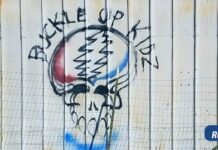Sacramento, Calif. – Atypical development can be detected as early as 12 months of age among the siblings of children with autism spectrum disorder, a study published by researchers with the UC Davis MIND Institute and UCLA has found.
Published online in the Journal of the American Academy of Child and Adolescent Psychiatry, the study found that close to half of the younger siblings of children with autism spectrum disorder (ASD) develop in an atypical fashion, with 17 percent developing ASD and another 28 percent showing delays in other areas of development or behavior.
Among the 28 percent of children with older siblings with ASD who showed delays in other areas of development, differences were identified in their social, communication, cognitive or motor development by 12 months. The most common deficits were in the social-communication domain, such as extreme shyness with unfamiliar people, lower levels of eye contact and delayed pointing.
The research suggests that parents and clinicians should be vigilant for such symptoms early on among the siblings of children with autism, in order to take full advantage of opportunities for targeted early intervention to improve those children’s outcomes.
“Having a child in the family with autism spectrum disorder means that subsequent infants born into that family should be regularly screened for developmental and behavioral problems by their pediatricians,” said Sally Ozonoff, study lead author and professor of psychiatry and behavioral sciences at the UC Davis MIND Institute.
“This research should give parents and clinicians hope that clinical symptoms of atypical development can be picked up earlier, so that we can, perhaps, reduce some of the difficulties that these families often face by intervening earlier.”
The study was conducted in 294 infant siblings of children with autism spectrum disorder and 116 infant siblings of children with typical development. All of the study participants were enrolled prior to 18 months of age. Data on the children’s development was collected at 6, 12, 18, 24 and 36 months of age using a variety of standard developmental tests for autism symptoms.
“Good clinical practice suggests that when children are showing atypical development they and their families should be provided with information about the child’s difficulties, clinical reports when practical and referrals to local service providers,” Ozonoff said. “The intervention approaches need to be chosen based on each child’s profile of strengths and weaknesses and each family’s goals and priorities.”
Other study authors include Gregory S. Young, Ashleigh Belding, Monique Hill, Alesha Hill, Meghan Miller, Sally J. Rogers, Marybeth Steinfeld and Ana-Maria Iosif, all of UC Davis; Ted Hutman and Scott Johnson of UCLA; and A.J. Schwictenberg of Purdue University.
The study was supported by the National Institute of Mental Health grants R01 MH0638398 (S.O.) and U54 MH068172 (Marian Sigman [deceased]).
At the UC Davis MIND Institute, world-renowned scientists engage in collaborative, interdisciplinary research to find the causes of and develop treatments and cures for autism, attention-deficit/hyperactivity disorder (ADHD), fragile X syndrome, 22q11.2 deletion syndrome, Down syndrome and other neurodevelopmental disorders.
(21+ years strong)
Welcome to the brighter side!
Get in front of local customers! 24/7 (365)























